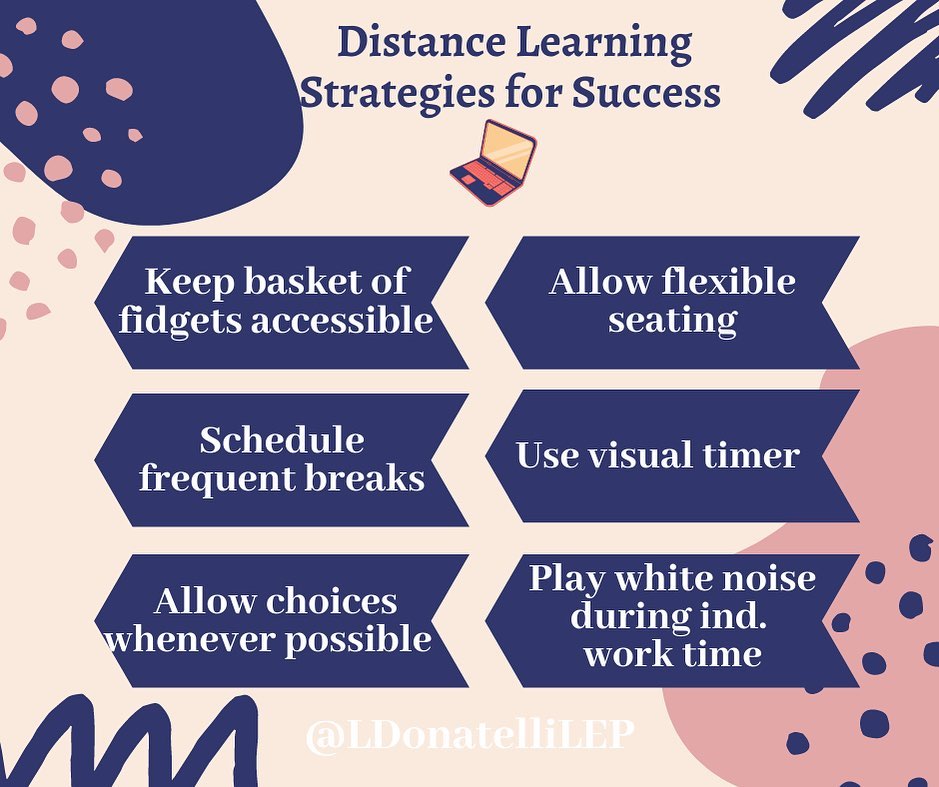
Distance learning has been challenging for many. Here are some simple strategies that might help make it more successful.
![]() Fidgets. Keep a basket accessible to your child while they are “in class”. These can be bought by the bundle on Amazon, or they can be things that can be found around your house (some examples would be rubber bands/hair ties, play dough/silly putty, squishy balls, Rubik’s cube, etc.)
Fidgets. Keep a basket accessible to your child while they are “in class”. These can be bought by the bundle on Amazon, or they can be things that can be found around your house (some examples would be rubber bands/hair ties, play dough/silly putty, squishy balls, Rubik’s cube, etc.)
![]() Breaks should be scheduled to occur right before your child’s max limit, which you can define by observing over a few days. The younger the kiddos, the more frequent the breaks.
Breaks should be scheduled to occur right before your child’s max limit, which you can define by observing over a few days. The younger the kiddos, the more frequent the breaks.
![]() Provide choices whenever possible. Choices can be in order of work, materials that will be used, the method of demonstrating learning that will be used (e.g. on the computer vs. pen/paper), etc.
Provide choices whenever possible. Choices can be in order of work, materials that will be used, the method of demonstrating learning that will be used (e.g. on the computer vs. pen/paper), etc.
![]() Flexible seating. This can be in a chair, a pillow on the floor, the couch, the grass in the backyard, a beanbag, even a stationary bike! Switching it up during breaks or other natural transitions can help to renew, and refocus.
Flexible seating. This can be in a chair, a pillow on the floor, the couch, the grass in the backyard, a beanbag, even a stationary bike! Switching it up during breaks or other natural transitions can help to renew, and refocus.
![]() A visual timer. This can be on the phone, oven, a countdown clock on the computer, or a visual timer in its own. Using a timer to define chunks of work time between breaks can help focus, and work completion.
A visual timer. This can be on the phone, oven, a countdown clock on the computer, or a visual timer in its own. Using a timer to define chunks of work time between breaks can help focus, and work completion.
![]() White noise can help to blockout distractions, and improve focus. Pay attention though to how your child responds. Some children can actually find this to be distracting, and it can end up impeding attention. If you see your child stopping work to listen as songs change, or other indicators they’re paying attention to something they hear, turn it off and see if there’s a difference.
White noise can help to blockout distractions, and improve focus. Pay attention though to how your child responds. Some children can actually find this to be distracting, and it can end up impeding attention. If you see your child stopping work to listen as songs change, or other indicators they’re paying attention to something they hear, turn it off and see if there’s a difference.
Above all, check in regularly to see what your child feels is working for them, and what isn’t.